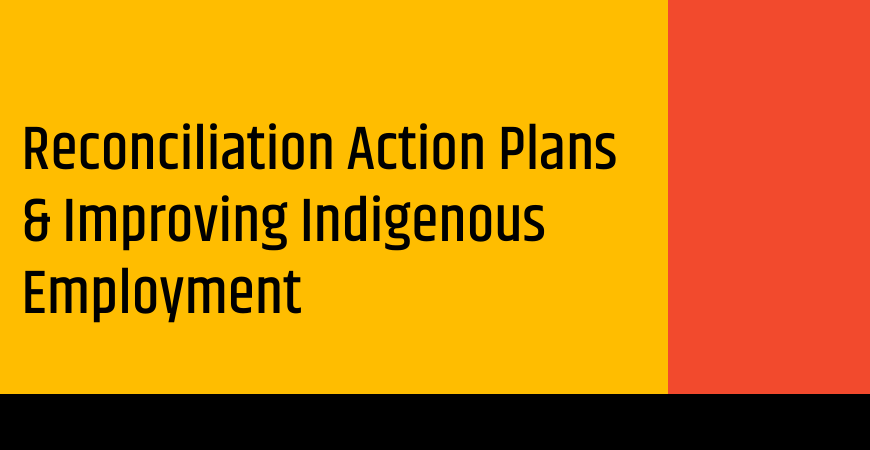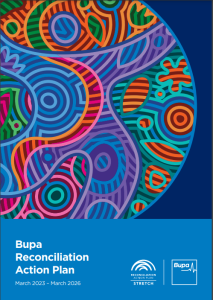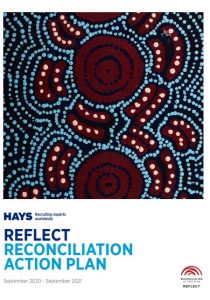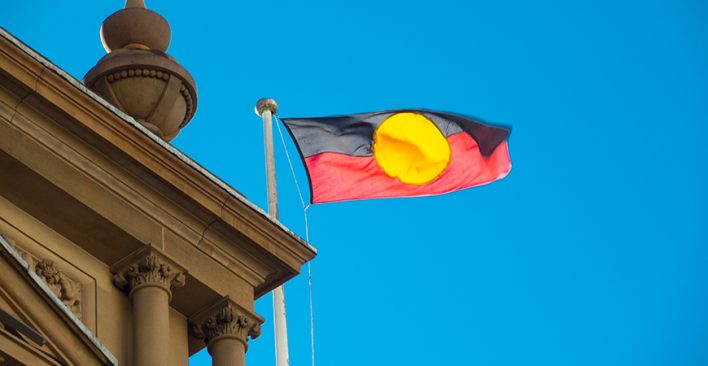Improving Indigenous Employment with Reconciliation Action Plans (RAPs)

Recently on our LinkedIn Page, we ran a poll asking the TA community whether they had a Reconciliation Action Plan (RAP) in place to support indigenous employment in their organisation.

57% of respondents told us they did have a RAP in place, and 19% told us their company was in the process of developing one. 24% of respondents said they had no RAP in place.
In light of these results and in honour of NAIDOC week, we thought it would be worthwhile exploring the benefits of Reconciliation Action Plans and the positive impact they have on Indigenous Employment and take a look at some companies who have RAPs in place.
What are Reconciliation Action Plans (RAPs)?
RAPs are valuable tools for organisations to contribute to reconciliation, foster diversity and inclusion, and make meaningful contributions towards closing the gap between Indigenous and non-Indigenous Australians.
Organisations work with Reconciliation Australia to develop RAPs tailored to their own needs, capacities, size and core business. More than 2,200 organisations in Australia now have RAPs and are actively engaged with implementing the actions and realising the goals they contain.
There are four distinct types of RAPs, which are designed to suit an organisation at different stages of their reconciliation journey; Reflect (Scope and nurture relationships), Innovate, (Implementing commitments to real action), Stretch (Embedding activities through every part of the organisation), and Elevate (Leading transformation to advance reconciliation in your business, sector, and beyond)
The 2022 RAP Impact Report found that there is sustained increase in employment opportunities for Aboriginal and Torres Strait Islanders across the RAP network.
How do RAPs impact Indigenous Employment?
RAPs have a significant impact on Indigenous employment in Australia. Here are just a few ways that RAPs contribute to Indigenous employment outcomes.
- Commitment to Indigenous Employment: RAPs demonstrate an organisation’s commitment to Indigenous employment by setting specific targets and goals for increasing Indigenous representation within their workforce. This commitment creates a more inclusive and diverse workplace environment.
- Skill Development and Training: RAPs often include initiatives focused on skill development, training, and career advancement opportunities for Indigenous employees. These programs help build capabilities, enhance qualifications, and provide pathways for career progression.
- Recruitment and Retention Strategies: RAPs encourage organisations to implement recruitment strategies that actively seek Indigenous job applicants. This can include targeted advertising, partnerships with Indigenous employment agencies, and community engagement initiatives. Additionally, RAPs often emphasize creating a supportive and culturally safe work environment to improve Indigenous employee retention rates.
- Tracking and Reporting Progress: RAPs typically include monitoring and reporting mechanisms to track progress against Indigenous employment targets. Regular reporting promotes transparency and accountability, encouraging organisations to continually assess and improve their strategies and outcomes.
Bupa’s Stretch RAP – delivering positive employment outcomes in the healthcare sector for Indigenous Australians

As part of their RAP, Bupa has developed a comprehensive First Nations Employment Strategy that is driving efforts to increase the recruitment, retention and progression of First Nations employees within their businesses.
During the 12-month period after implementing the strategy in 2021, Bupa worked with 15 Times Better to establish a tailored First Nations employment process, with a particular focus on Bupa Villages and Aged Care (BVAC), to identify and overcome barriers for First Nations candidates and establish solutions to improve recruitment and retention.
The recruitment team and key hiring managers were provided with tailored cultural learning to ensure they better understood the key pillars of reconciliation, why these were important and how they could contribute to supporting First Nations employment. The results were incredibly positive, with BUPA hiring more First Nations job seekers in 2022 than in any previous year.
According to Dina Ward, Head of Organisational Development – Talent, D&I, Partnering, Bupa’s service offerings means that it is primed to address both equity and employment issues faced by First Nations people.
“As a health and care company with a strong ESG commitment, Bupa is well positioned to address the health equity issues faced by Indigenous Australians, and that is what our Stretch RAP is truly intended to achieve.
“As a significant employer of healthcare workers, Bupa are also in a unique position to address Indigenous workforce participation – 22% of Indigenous students are enrolled in health degrees and 15% of Indigenous workers work in health occupations.
“In support of our RAP, Bupa’s First Nations Employment Strategy represents a concerted focus and investment in enabling employment opportunities for Indigenous Australians. The two reinforce each other, and reinforce Bupa’s goal to continue to build a safe and welcoming workplace for Indigenous Australians, and not only enable jobs but help to build meaningful careers and the best, most diverse workplace.”
View Bupa’s Reconciliation Action Plan here.
Hays’ Innovate RAP – improving onboarding with Indigenous Employees in the mining sector
 Hays developed their RAP in 2020 and has a dedicated National Aboriginal Engagement Manager.
Hays developed their RAP in 2020 and has a dedicated National Aboriginal Engagement Manager.
“We’ve conducted Cultural Learning Needs Analysis to help develop the capability of our people, built long-term partnerships with ATSI organisations and developed our Indigenous Participation Plan (IPP), delivering an investment of over $1 million to ATSI-owned businesses,” says Richard Barnett, MSP Director – ANZ at Hays.
“Our Innovate RAP is currently being reviewed by Reconciliation Australia and includes guidelines for inclusive recruitment practices as well as volunteering and internship programs.
“An example of this work in practice is the partnership between Hays and Glencore in Mt Isa. Working together since 2010, we have recently collaborated with the Indigenous Employment Program Coordinator and a local job agency to assist with onboarding a team of Aboriginal staff. Hays provides targeted support to the candidates with regular check ins, provision of PPE, and medical and inductions to ensure they have the tools, training, and support to have a successful career.
“Hays also provides strategic advice to our RPO & MSP clients on increasing their spend with First Nations-owned recruitment suppliers and hiring more First Nations workers in the these outsourced recruitment programs, as part of our wider suite of diversity advisory services.”
Related articles
Leave a Reply
Sign up to our newsletter
Get a weekly digest on the latest in Talent Acquisition.
Deliver this goodness to my inbox!


